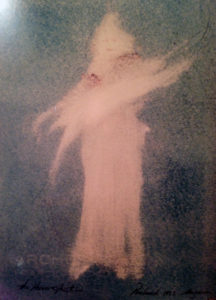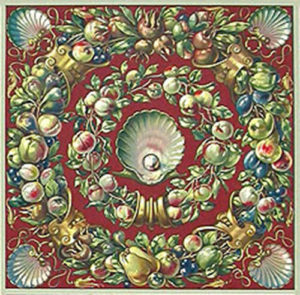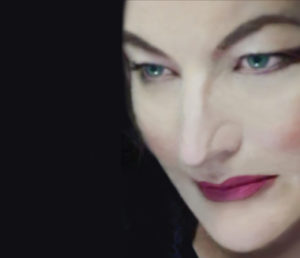
The ghosts that frequent my family are fond of waking us from sleep, often early in the morning. They were hard working folks in this earthly life and apparently no less so on the other side. And though I come from this same long line of early risers, I am not one myself. It’s just not in my nature. In fact, most of these Book of Days chapters are written in the deepest dark of night, when all is quiet and I can sit and think with darkness all around me. Tonight, as it so happens, it is blustery outside––perfect for that witching hour setting––but the darkness is a gentle darkness, illuminated with the glow of orange and purple lights for Halloween, inside and out. It ushers in a more mysterious time of year, Halloween does, and it is a favorite time of year in this house, and so we welcome it warmly. The lights are part of that welcome.
Back to the ghosts. History has shown that that early-to-rise philosophy by which my ancestors lived continues on into the afterlife. My mother, who, like me, enjoys a little extra sleep in the morning, revealed that she was awoken by my grandmother early one morning after Grandma’s passing. A Mass was being celebrated for Grandma at church that morning, and Mom remembers distinctly being nudged by someone and waking up to see her mother there, come to get her up and out of bed so she could get to church. It was a gentle nudge, and Mom felt at peace about the event.
My father was awoken by his mother early one morning, too, though she came for no apparent reason. It was on the first anniversary of her death, just at the time she died, in fact, about four in the morning. Something made him open his eyes from sleep, and there next to him, beside his bed, before the moonlit window, stood a shadowy form. He recognized the form immediately as that of his mother’s. His heart was racing. The shadowy figure said nothing and did nothing; she just backed away slowly and vanished.
That was in late November, after Halloween but still about the time of year when we especially remember those who have gone before us, the time of I Morti––the Dead––which begins at All Hallow’s Eve (the source of our modern word Halloween) and runs to Martinmas in mid-November and perhaps lingers a bit longer still for some. With Halloween and the days that follow (All Saints Day on the First of November and All Souls Day on the Second), we arrive at the last of the year’s cross quarter days, finding ourselves here in the Northern Hemisphere at the midpoint between the autumnal equinox and the coming solstice of midwinter. The ancient Celts believed this was the time of year when the veils separating the worlds of the living and the dead were at their most permeable. And still, to this day, this time of year holds this magic.
My grandmother was tough on my father and they butted heads a lot, but there was some mystery in their relationship, too. Dad was born with la camicia––the “shirt” or the “veil,” as they say. In English, we call it a caul: a piece of membrane attached to the newborn child. Not all of us are born this way; in fact, it’s pretty rare. If you are, well… we Italians can be a pretty superstitious people, you know. It is good luck to be born with “the veil,” but it is also said of those born with la camicia that they have the ability to see their path of life and also the path of the dead. They are a bridge between the realms. They are given the chance, if they want it, to observe the World of Shadows that exists parallel to our world. The old Lucan women of Basilicata say that if you have these powers, on All Souls Day you can place in the middle of a crossroads a basin of water and in the reflection of the water you will see the Procession of the Dead.
You can use that power in the Lucan tradition but once. Dad has never used his. There is far too much traffic these days to risk placing a basin of water in a crossroads, let alone peer into it. Plus he is just not interested. The shadowy visit from his mother left him shaken enough. It didn’t have the same calming effect on him that my mom experienced when her mother visited. But Dad still carries la camicia: his mother saved it after his birth and gave it to him on his 18th birthday along with a pipe. Later, after he met my mom, her mother sewed it into a little pouch that he carries with him inside his wallet, like a good luck charm. He had it with him all through the Second World War and he was pretty lucky through that, and truth be told, Dad has had a rather charmed life all his years. He’s worked hard through it but has always been able to accomplish what he wished. He is not, however, interested in the slightest in his apparent powers as a bridge between the living and the dead.
Come this time of year, I think of the me that was a little kid, trick or treating in a hobo costume on any 1970s Halloween (I was almost always a hobo) and I think of that little kid as a ghost, of sorts, too. He existed for a spell but now I am me, the grown man who writes to you every now and then. I am not that same me as that little kid, not exactly. And so maybe he is the first ghost I have known, dressed as that hobo in the CPO jacket with the patches sewn on it by my grandma, a crayon beard, crushed hat. And if I wasn’t a hobo, I was probably Charlie Chaplin’s Little Tramp character (another, more specific hobo) or if it was 1969 I was dressed in a Woolworth’s astronaut costume, the kind that came in a box with a plastic mask, very popular that year, or perhaps a scarecrow one other year, that one store bought, as well. But all of them by now––hobo, tramp, astronaut, scarecrow––ghosts of sorts, ghosts of the past.
But I, too, have run into more traditional ghosts. My grandfather died in 1982 when I was 18. Every night I kissed them goodnight, both Grandma and Grandpa, but the last night of his life we had company and we were gathered around the table and he was tired and he went to bed and I did not get up to kiss him; instead, he made a general proclamation that he was off to bed and I said goodnight to him from my seat, just like everyone else at the table. I never saw him again. He left this world during that night and it always bothered me that I hadn’t given him a proper goodnight kiss.
Months later, I had climbed into bed and before I could switch off the light in the closet from the light switch next to my bed, I fell fast asleep. But eventually I did awake; I awoke distinctly feeling that I had been kissed goodnight by my grandfather. I am very much aware that it could have been a dream, but it felt so very real that still to this day I have my doubts about that rational argument. It seemed beyond dream. My grandfather also liked to turn off unnecessary lights, so I also believe he may have returned not just to set my mind at ease about the kiss, but also to wake me up so I’d shut off the light. He was a practical man, after all. I count Grandpa as the first real ghost I have known.
There is something reassuring about the dead coming back to do simple, ordinary things. Like getting us up out of bed for an appointment or reminding us to turn off a light, and the ghosts I have known, for the most part, have simply been trying to help me out.
There was also the guy at the library where I work who appeared in a sideways glance while I was in the restroom on the third floor and who was gone before I could turn to see him fully. He was dressed in orange. Appeared, disappeared, and when it happened the electrical energy in the room shifted so all the hair on my body stood on end. I mentioned this to my boss at the time, who replied calmly, “Oh, you’ve seen our ghost.”
The building today is a patchwork of wings constructed at various times, but as the story goes, when the original five story building was being constructed in the 1960s, one of the workmen had fallen to his death from one of the upper floors, and it is his ghost, they say, that roams the building, even now. People have known of him since the building opened, but that was decades ago, and by now, most of the folks who knew him are gone, retired or off to different jobs. Some have joined him there in the afterlife. As one of my younger coworkers observed just a few nights ago, about something completely unrelated: “This place has terrible institutional memory.” There is some truth to this. All the folks who have left by now have taken his story with them and though I wasn’t by any long shot one of the originals who knew the tale, I may very well be now one of the last in the building who is familiar with it, and I wonder, what becomes of the man in orange once I myself leave that place? Does a ghost have any relevance if no one knows his story? I worry about him sometimes. But then again, that’s in my nature, too.
Image: The Horner Ghost. When I went to the Penland School of Crafts to take my first book arts class in 1994, the print shop was located down the hill in Horner Hall. We heard all kinds of stories at Penland, and one of them was about the Horner Ghost who shared the space with us. I opened a door down the hall from the print shop one night. It was a broom closet. I found this ethereal sketch pinned to the back of the door.


